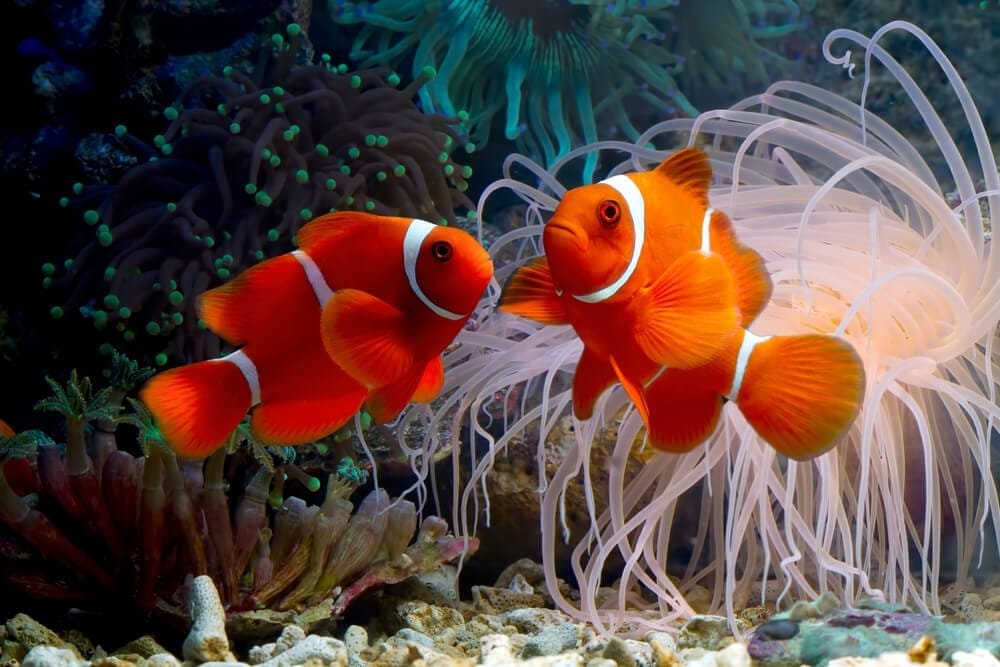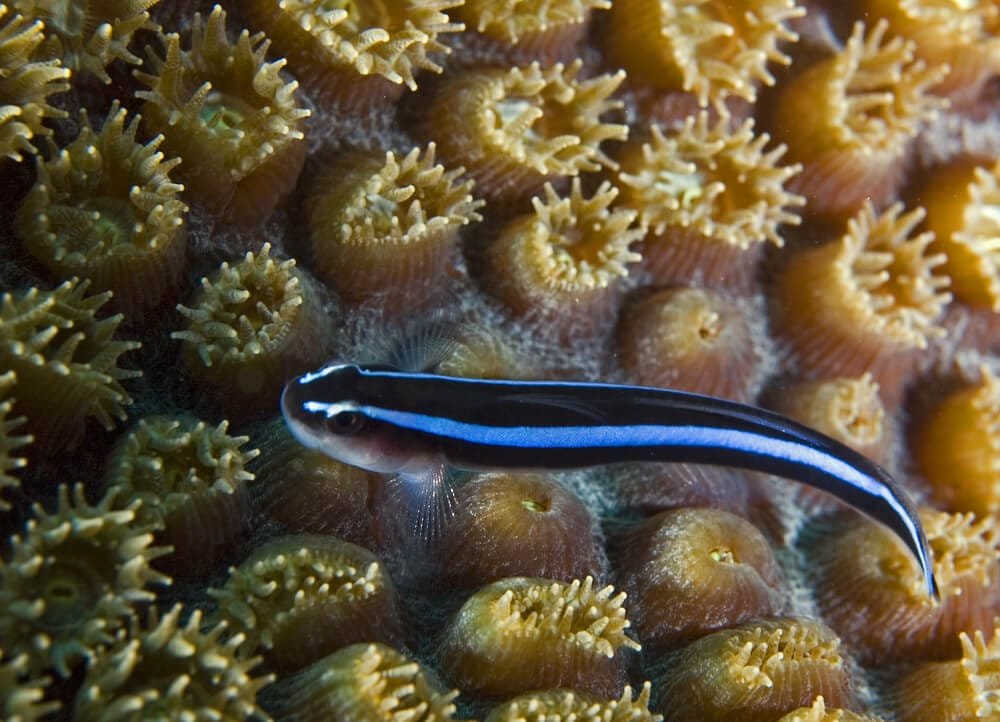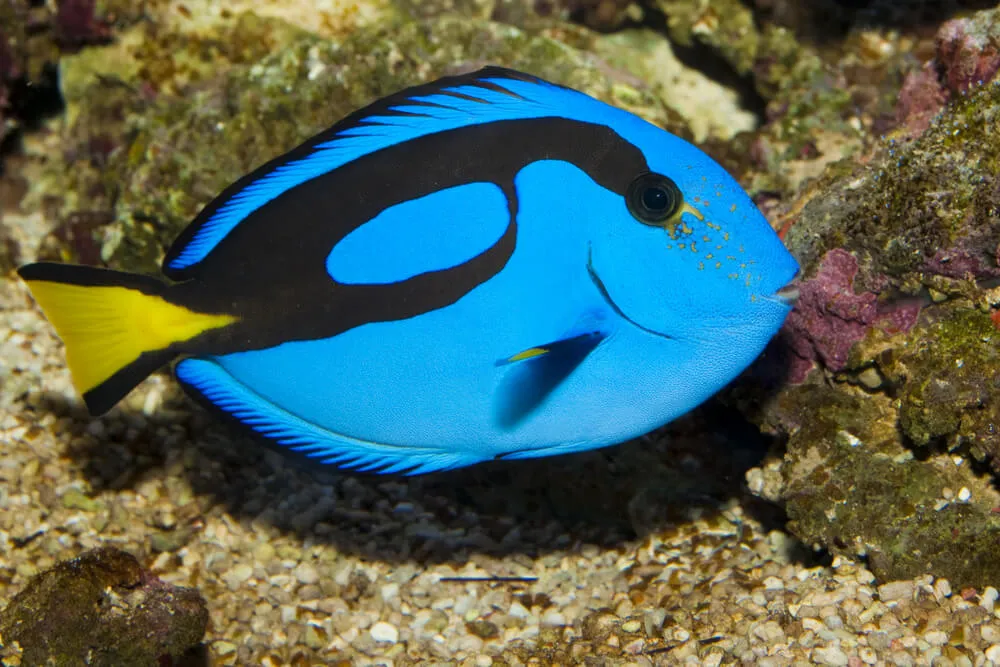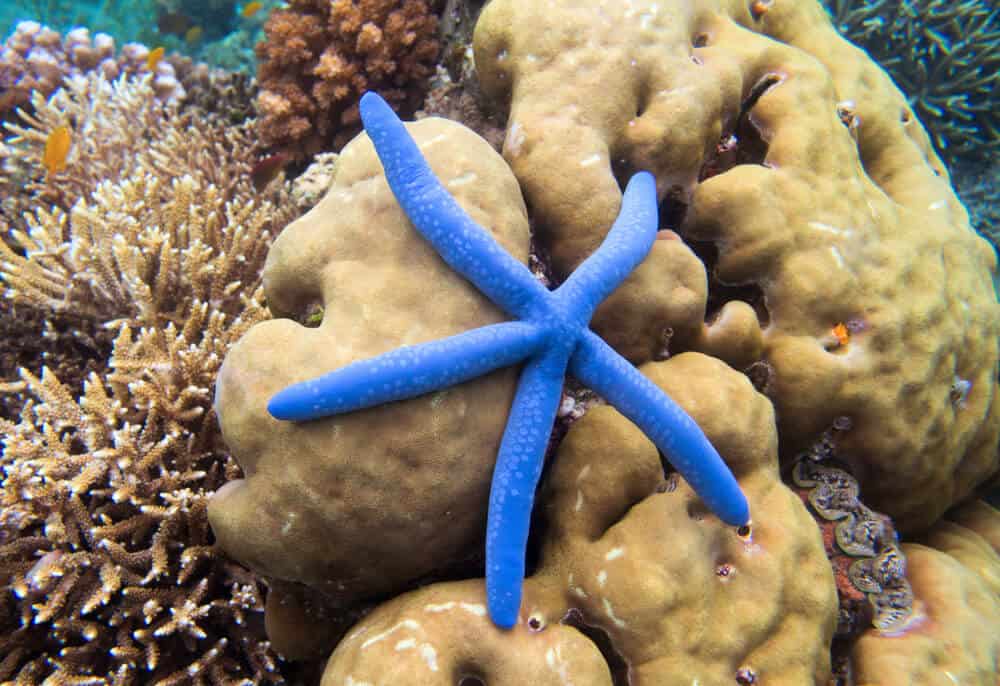Did you know over 30 clownfish species are popular in aquariums? They are known for their bright colors and interesting behavior. Keeping them happy means learning how to care for them properly. This includes setting up the right tank, keeping water conditions just right, and creating a good home for them with an anemone.
Knowing how to care for clownfish is key to a thriving aquarium. By understanding their needs, you can give them the best care. This includes the right tank, water conditions, and food. Whether you’re new or experienced, learning about clownfish care is essential for enjoying their unique personalities.
Key Takeaways
- Over 30 recognized species of clownfish are available in the aquarium hobby, making them a popular choice.
- A minimum tank size of 20 gallons is recommended for a pair of clownfish, providing them with ample space to thrive.
- Clownfish require specific water parameters, including temperature, salinity, and pH levels, to stay healthy.
- A balanced diet and regular feeding schedule are essential for maintaining the health and well-being of your clownfish.
- Regular water changes and maintenance are key to keeping your clownfish healthy and happy in their aquarium.
- Clownfish can live up to 5 years or more in proper conditions, making them a long-term companion in your home aquarium.
Understanding Your Clownfish’s Natural Habitat
Clownfish live in the warm waters of the Pacific and Indian Oceans. They are found in places like the Great Barrier Reef and the Red Sea. They live with sea anemones, which protect them from predators.
In their coral reef home, clownfish are key to the marine world. They help keep the ecosystem balanced.
To keep your clownfish happy, you need to know about their habitat and nutrition. They eat small crustaceans, plankton, and algae. They also need a safe place to start their life in captivity.
In the wild, clownfish have special ways of breeding and spawning. They lay eggs in their anemone home. To help them spawn in your tank, make sure the water is just right.
Life in Coral Reefs
Clownfish love shallow, warm waters. They live between 1-12 meters deep. They call coral reefs home, where they find food and safety.
Symbiotic Relationship with Anemones
Clownfish and sea anemones have a special bond. The fish gets safe from predators, and the anemone gets benefits from the fish’s waste.
Natural Behaviors and Social Structure
Clownfish are social and live in groups. They communicate, work together, and defend their territory.
Setting Up the Perfect Clownfish Tank
Setting up a clownfish tank requires careful planning. A single adult clownfish needs a tank of at least 29 gallons. The clownfish tank setup is key to keeping the water quality right for your fish.
To make a great home for your clownfish, focus on the right temperature, salinity, and filtration. You also need to change the water often to keep ammonia and nitrates low. Here are some important things to think about:
- Tank size: minimum 29 gallons for a single adult clownfish
- Water temperature: between 75-82°F (24-28°C)
- Salinity: 1.020-1.026 specific gravity
- Filtration: regular water changes and proper filter maintenance
By following these tips and keeping the water quality high, you can make a happy home for your clownfish. Always check the ammonia and nitrates levels and adjust as needed to keep your fish healthy.
Essential Water Parameters for Healthy Clownfish
Keeping the right water parameters is key for your clownfish’s health. Regular checks and tweaks keep the environment stable. Testing the water and changing it often are musts for good water quality.
Watch the oxygen, alkalinity, and pH levels closely. Clownfish prefer a pH between 7.8-8.4 and a salinity of 1.020-1.026 specific gravity. Make sure ammonia and nitrite levels are zero, and nitrate levels are under 20 ppm.
| Water Parameter | Ideal Range |
|---|---|
| pH Level | 7.8-8.4 |
| Salinity | 1.020-1.026 specific gravity |
| Ammonia Level | 0 ppm |
| Nitrate Level | Below 20 ppm |
Testing and adjusting the water regularly is vital for your clownfish’s health. Don’t forget to do weekly water changes of 10-20% to keep the water fresh and clean.

How to Care for Clownfish: A Complete Guide
Clownfish care means setting up the right environment. This includes a proper feeding schedule and keeping the aquarium clean. Start with a 10-gallon tank for one clownfish. Make sure it has lots of hiding spots and clean water.
For feeding, mix pellets and frozen food in their diet. Feed them once or twice a day. This ensures they get the nutrients they need. Regular water changes and checking water quality are key to aquarium maintenance.
Important things to remember for clownfish care are:
- Provide a suitable tank size and environment
- Offer a varied and nutritious diet
- Keep up with aquarium maintenance
- Watch water parameters and adjust as needed
By following these tips, you can help your clownfish live a long, healthy life. Keeping the aquarium clean, feeding them right, and creating a good environment are all important. Stay committed to these practices for the best care.
| Parameter | Recommended Value |
|---|---|
| Water Temperature | 75-82°F (24-28°C) |
| pH Level | 7.8-8.4 |
| Salinity | 1.020-1.026 specific gravity |
Optimal Filtration and Water Flow Systems
Creating a healthy home for clownfish means focusing on filtration and water flow. Good filtration removes bad stuff and adds oxygen. It also helps spread heat and nutrients around the tank.
Keeping your filter clean is key. You need to clean or change filter media, check for clogs, and watch the water flow. A clean filter means a happy clownfish.
Creating natural water movement is important. Use powerheads or other devices to do this. It makes the tank feel more like a coral reef, which is better for your clownfish.
| Parameter | Recommended Value |
|---|---|
| Water Temperature | 75°F to 82°F (24°C to 28°C) |
| pH Level | 8.1 to 8.4 |
| Specific Gravity (Salinity) | 1.020 to 1.025 |
Follow these tips and keep up with maintenance to make a great home for your clownfish. Always check your water flow and filtration to keep everything running smoothly.
Feeding Your Clownfish
Clownfish are omnivores, needing a diet that’s both protein-rich and vegetable-based. A good feeding schedule is key to giving them the right nutrients. They mainly eat pellets, but also enjoy frozen food and live food to mimic their natural diet.
For the best nutrition, feed them 2-3 times a day. Make sure they eat it all in a few minutes to avoid overfeeding. A good rule of thumb is to feed them 4-8 pellets or pieces of frozen food daily, based on their eye size.
Some important things to remember when feeding clownfish include:
- Give them a varied diet with pellets, frozen food, and live food
- Stick to a regular feeding schedule for consistency
- Watch how much they eat to avoid overfeeding and keep the water quality good
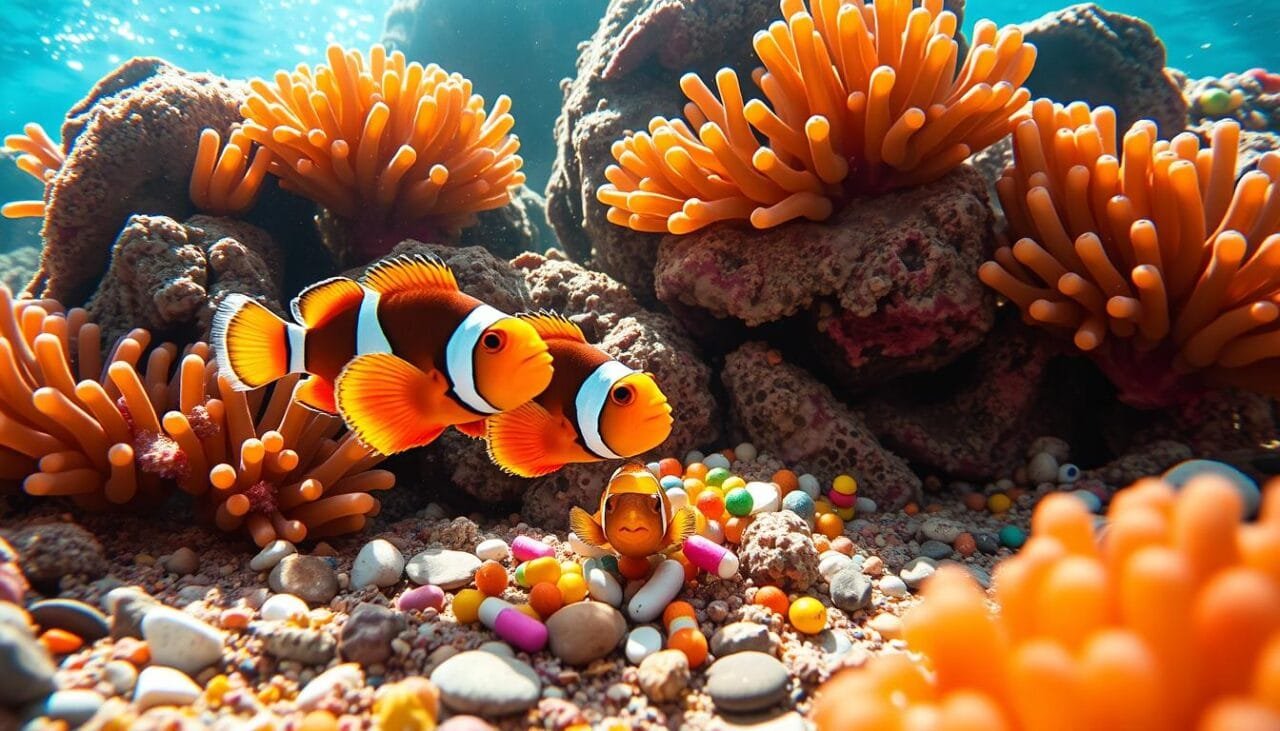
By following these tips and setting up a good feeding schedule, you can help your clownfish stay healthy. Make sure to mix up their diet with pellets, frozen food, and live food to keep it interesting and balanced.
| Food Type | Frequency | Portion Size |
|---|---|---|
| Pellets | 2-3 times a day | 4-8 pellets |
| Frozen Food | 2-3 times a day | Equivalent to pellet portion |
| Live Food | Occasional | Varying amounts |
Creating a Natural Environment with Anemones
To make a home for clownfish, you need to set up a natural space with anemones. This means understanding how clownfish and anemones live together. Clownfish get safe from predators, and anemones get cleaned and fed by the fish. It’s important to know which anemones work well with clownfish and how they behave.
For anemone care, you need to keep the water right. It should be a specific gravity of 1.024-1.026. Also, make sure there’s strong water flow. The light in the tank affects anemones too. Some do well under strong T5 lights.
Feeding anemones is key. They usually eat once a week, but this can change based on their health and how they react to food.
When you add anemones to your tank, pick ones that go well with clownfish. Make sure the anemone is big enough to host the fish. A good rule is to have an anemone three times bigger than the fish. This helps keep both the fish and anemone healthy and happy together.
Common Health Issues and Prevention
Clownfish, like all living things, can face health problems. It’s important to spot illness signs early and act fast. Common issues include diseases from parasites and bacterial infections that might need antibiotics.
Keeping your clownfish healthy starts with prevention. Regular water checks and upkeep can stop health problems. Keeping their environment clean is key to their well-being.
Watch for changes in behavior, appetite, or looks to spot illness. If you see something odd, act quickly to stop disease spread. Treatment might include antibiotics or meds for parasites.
Some common health issues in clownfish include:
- Ich (white spot disease)
- Brooklynella
- Parasitic infections
Knowing about these health issues and taking steps early can help. This way, your clownfish can live a happy, healthy life.
Selecting Compatible Tank Mates
Choosing the right tankmates for your clownfish is important. Clownfish can be territorial and may show aggression towards other fish. It’s key to pick tankmates that are peaceful and fit well in terms of size and water needs.
Good tankmates for clownfish include the Court Jester Goby, Neon Goby, and Pajama Cardinalfish. These fish are small and peaceful, making them a good match. But, larger fish like the Red Coris Wrasse or Yellow Tang might not be good due to their size and aggression.
When adding new fish, think about your clownfish’s social hierarchy. Clownfish bond closely with their anemone and can get aggressive if their space is threatened. Choosing compatible and peaceful tankmates helps create a thriving aquarium.

To ensure harmony, research the needs of your desired tankmates. Look at size, temperament, and water needs for a compatible community. This way, you can enjoy a lively and diverse aquarium, with your clownfish and tankmates getting along well.
Breeding Clownfish in Captivity
Trying to breed clownfish in your home can be very rewarding. It needs careful planning and attention to detail. When kept together, mated pairs of clownfish can breed in home aquariums. They can spawn and produce healthy eggs if the conditions are right. Egg care is very important during this time because the eggs are sensitive to water quality and temperature changes.
After the eggs hatch, the larvae need rotifers as their main food. It’s important to have a steady supply of rotifers for the larvae to survive. The ideal tank for hatching should be a 10-gallon tank with a heater, air stone, thermometer, and adjustable lighting. The water temperature needs to be stable, matching the brood tank for the best hatching conditions.
Here are some key things to consider when breeding clownfish in captivity:
- Provide a suitable breeding environment with stable water parameters
- Ensure proper spawning conditions, including a separate breeding tank or a designated area in the display tank
- Monitor and maintain optimal water quality, including frequent water changes and ammonia level monitoring
- Feed the larvae rotifers consistently during the first few days of their lives
By following these guidelines and providing proper egg care and fry development support, you can increase the chances of successful breeding. This way, you can raise healthy clownfish in captivity.
| Day | Event | Action |
|---|---|---|
| 1-5 | Eggs hatch | Monitor water quality and provide rotifers |
| 5-10 | Larvae develop | Continue to provide rotifers and monitor water quality |
| 10-20 | Fry develop | Transfer fry to a grow-out tank and continue to monitor water quality |
Daily Maintenance Routines
To keep your clownfish healthy, it’s key to have daily routines. This means regular water testing to check the water’s quality. Also, do water changes of 10–25% every two to four weeks to keep the tank clean.
Make a cleaning plan, including filter media and tank cleaning. Also, set up a feeding schedule. Clownfish need food one or two times a day, just enough for them to eat in a few minutes.
Following these daily maintenance steps helps avoid health issues. Regular water testing and cleaning plus a good feeding schedule create a healthy tank. This ensures your clownfish stay happy and healthy.
Keeping your tank clean is vital for your clownfish’s health. Spend a few minutes each day on these tasks. This way, you’ll have a thriving and stunning aquarium for years.
Understanding Clownfish Behavior
Clownfish swim in a unique way, wiggling back and forth. They are also very territorial. This behavior comes from their social hierarchy. Dominant fish lead, and they live in small groups.
In the wild, a group has a dominant male and female, and several males below them. This social hierarchy is key to their behavior. Dominant fish protect their territory from others.
Clownfish and their host anemone have a special relationship. The anemone keeps predators away, and the clownfish keeps it clean. This helps both survive. But, it can also cause aggression as they fight for the anemone and their territory.
Some key factors that influence clownfish behavior include:
- Territory: Clownfish are territorial and will defend their area from other clownfish.
- Social hierarchy: Dominant individuals lead the way and determine the behavior of subordinate clownfish.
- Aggression: Clownfish can be aggressive when competing for access to their host anemone or defending their territory.
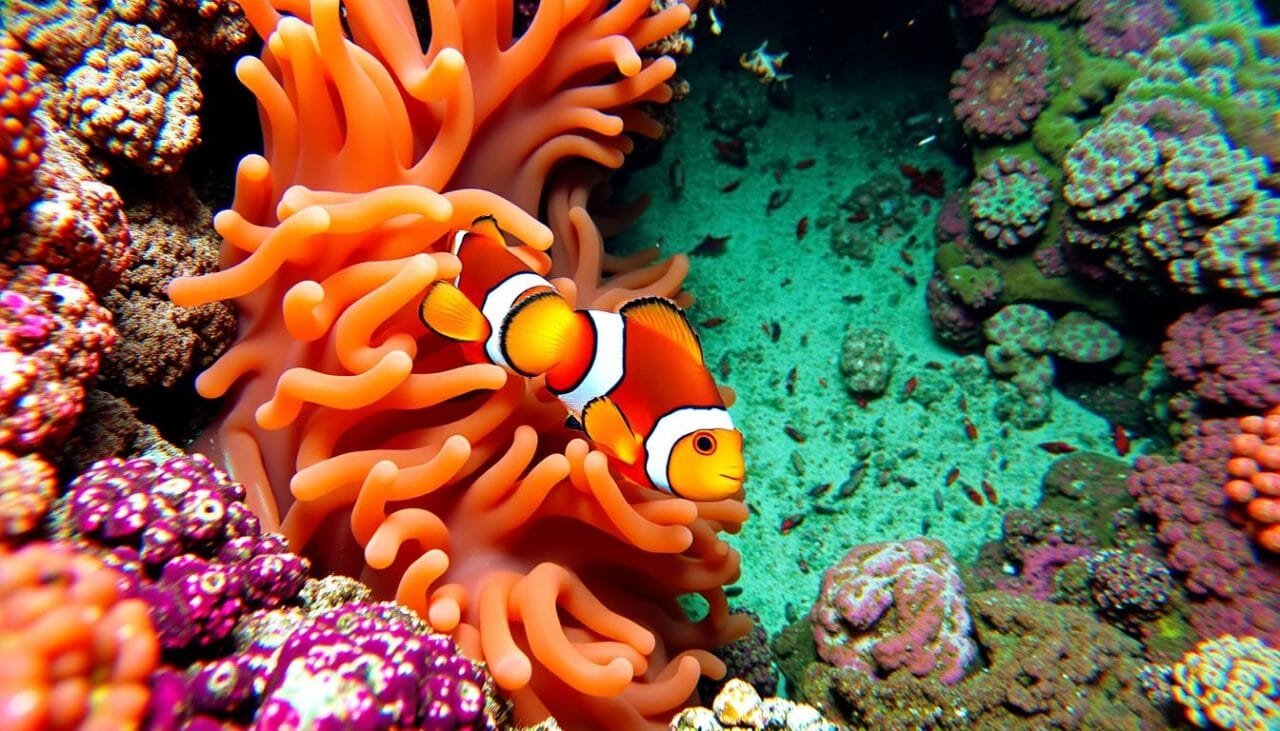
Understanding clownfish behavior helps us appreciate their unique personalities. It also helps us create a good environment for them.
| Clownfish Behavior | Description |
|---|---|
| Territorial | Clownfish defend their territory from other clownfish. |
| Social Hierarchy | Dominant individuals lead the way and determine the behavior of subordinate clownfish. |
| Aggression | Clownfish can be aggressive when competing for access to their host anemone or defending their territory. |
Advanced Care Techniques
To improve your clownfish care, try color enhancement, stress management, and growth optimization. These methods can make your clownfish healthier and happier. Start by giving them a balanced diet and a nice home with lots of places to hide.
Advanced care includes:
- Keeping the water right, like temperature and salt levels, to lower stress on your clownfish.
- Feeding them a varied and nutritious diet to help with growth optimization.
- Creating a colorful and interesting environment to boost color enhancement and happiness.
A clean tank with good filters and water flow helps reduce stress and supports healthy growth. Regular water checks and upkeep can catch and fix problems early. These advanced care steps can make your clownfish thrive in a great environment.
By following these tips and caring deeply, your clownfish can live a long, healthy life. Always focus on stress management, growth optimization, and color enhancement for the best care.
| Technique | Description |
|---|---|
| Color Enhancement | Providing a visually stimulating environment to promote vibrant colors |
| Stress Management | Maintaining proper water parameters and providing a suitable environment to reduce stress |
| Growth Optimization | Providing a varied and nutritious diet to support healthy growth |
Troubleshooting Common Problems
Keeping clownfish can be tricky, with issues like feeding problems, water quality, and equipment failures. It’s key to solve these problems to keep your clownfish healthy. Identifying the root cause of the issue is the first step. For example, if your clownfish won’t eat, it might be because of bad water or wrong feeding methods.
To fix common feeding issues, knowing what your clownfish need is important.
- Give them a mix of high-quality pellets and frozen foods.
- Don’t overfeed, as it can harm water quality and cause stomach issues.
- Watch how much they eat and change how often you feed them.
Regular water changes, good filtration, and keeping water parameters right are also key. Being proactive and informed helps you spot and fix problems fast. This way, your clownfish will get the best care and do well in their home aquarium.
Conclusion: Ensuring Long-Term Success with Your Clownfish
By following the guidelines in this article, you can make your clownfish’s home a thriving place. You’ll get to enjoy their amazing personalities for years. This guide covers everything from their natural habitat to feeding, health, and breeding.
A happy clownfish comes from consistent care and a love for these creatures. With the right setup and water, your clownfish will flourish. This brings joy and wonder to your aquarium. Stay committed, and you’ll see your clownfish thrive for many years.
FAQ
What is the importance of proper clownfish care?
Proper care is key to keeping your clownfish happy and healthy. They add color and interest to your aquarium. But, they need specific care to thrive.
What is the natural habitat of clownfish?
Clownfish live in coral reefs and have a special bond with anemones. Knowing their natural habits helps you create a good home for them in your aquarium.
What are the essential steps for setting up the perfect clownfish tank?
To set up the perfect tank, think about size, water quality, temperature, and salinity. A good filter is also important. These steps help your clownfish thrive.
What are the essential water parameters for healthy clownfish?
Keeping the right temperature, salinity, pH, and oxygen levels is vital. Also, watch ammonia and nitrates. This creates a stable home for your clownfish.
How do I care for my clownfish on a daily basis?
Daily care includes a feeding schedule and regular maintenance. This ensures your clownfish stay healthy and happy.
Why is optimal filtration and water flow important for clownfish?
Good filtration and water flow are essential for your clownfish’s health. Choose the right filter and maintain water movement. Regular maintenance is also key.
What should I feed my clownfish?
Feed your clownfish a balanced diet to keep them healthy. Knowing what to feed and when is important for their well-being.
How do I create a natural environment with anemones for my clownfish?
Choose the right anemone species and meet its care needs. Introduce it carefully to mimic their natural habitat. This promotes a healthy relationship.
What are common health issues in clownfish and how can I prevent them?
Know the health risks and watch for signs of illness. Taking proactive steps can prevent and treat common problems in your clownfish.
How do I select compatible tank mates for my clownfish?
Pick tank mates based on their social hierarchy and aggression. This creates a peaceful community in your aquarium.
Can I breed clownfish in captivity?
Yes, you can breed clownfish in captivity. Understand the breeding process and provide the right conditions. This way, you can raise their offspring.
What are the common behaviors of clownfish?
Clownfish have a social hierarchy and can be territorial. Knowing their behaviors helps you create a suitable environment and appreciate their unique personalities.
What advanced care techniques can I implement for my clownfish?
Advanced care includes color enhancement, stress management, and growth optimization. These techniques can improve your clownfish’s health and happiness.
How can I troubleshoot common problems in clownfish care?
Be aware of common issues like feeding problems and water quality issues. Having a plan to address these can ensure your clownfish get the care they need.
